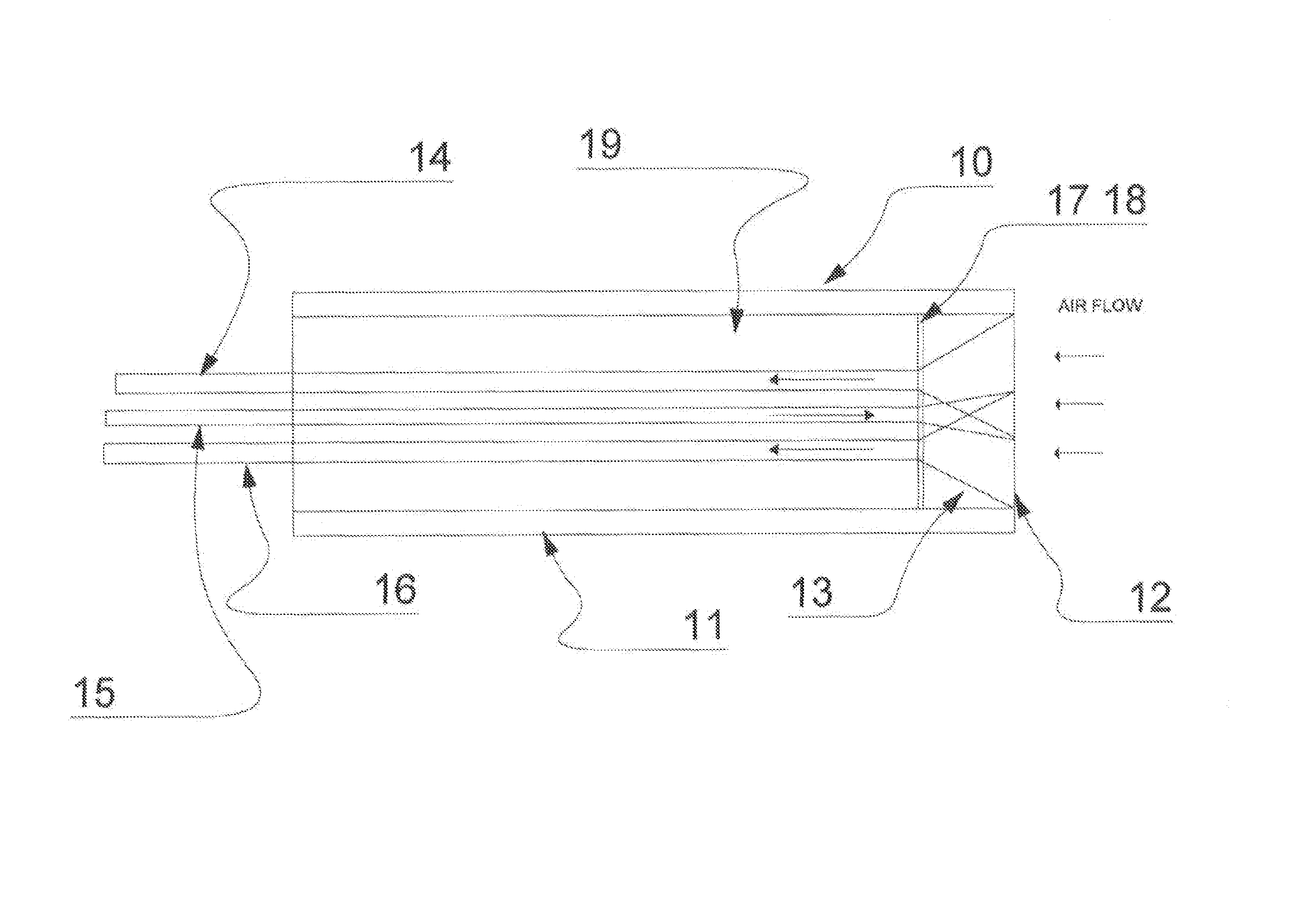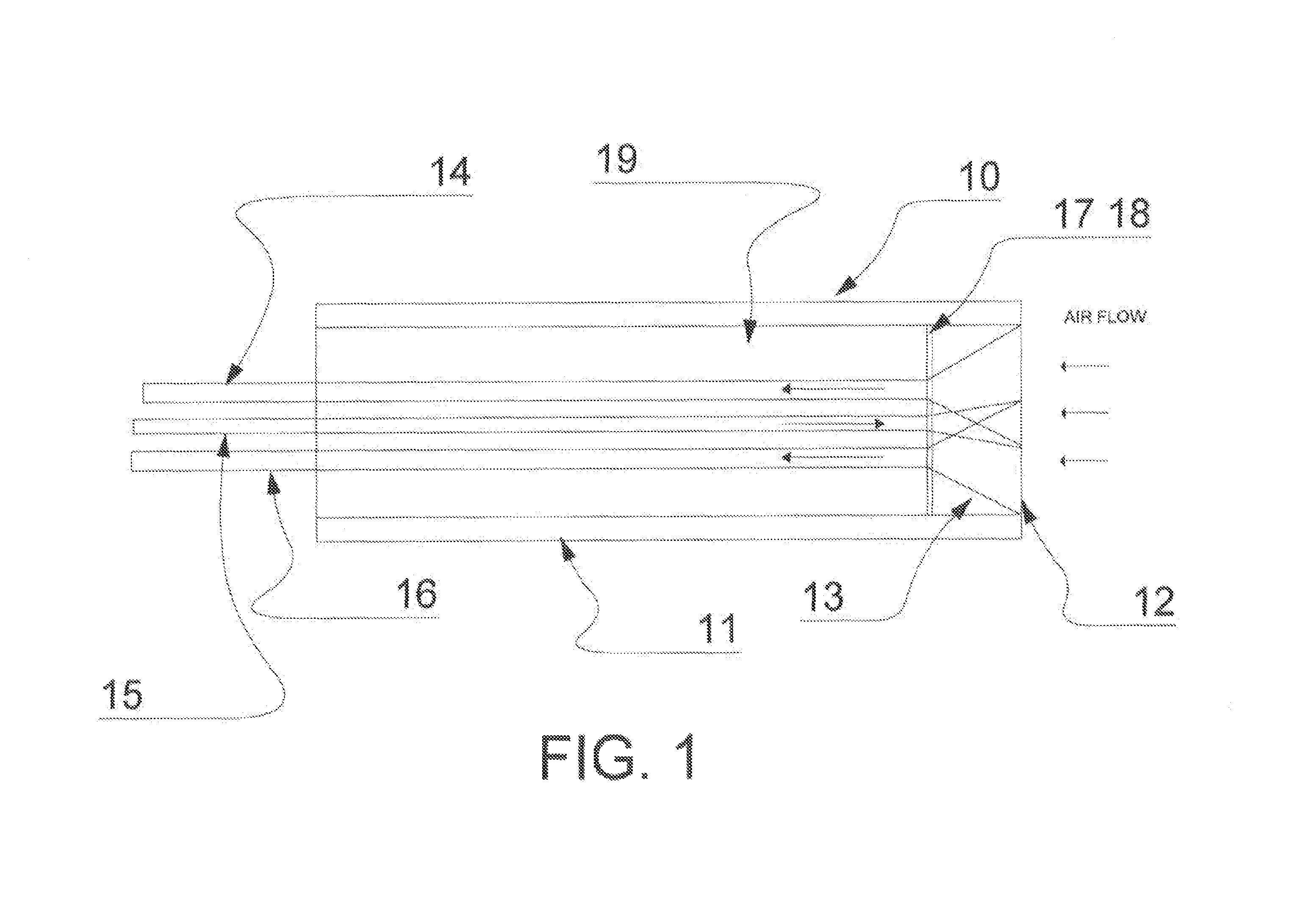Inflight ice detection system
a technology of ice detection system and inflight detection, which is applied in the direction of de-icing equipment, aircraft components, instruments, etc., can solve the problems of affecting the performance characteristics of aircraft, affecting the performance of aircraft, and altering the handling characteristics of aircraft, so as to reduce the work load of pilots, reduce the effect of water discrimination and low cos
- Summary
- Abstract
- Description
- Claims
- Application Information
AI Technical Summary
Benefits of technology
Problems solved by technology
Method used
Image
Examples
Embodiment Construction
[0034]The current invention detects ice accretion on aircraft surfaces by polarization discrimination technique.
[0035]The preferred embodiment and other exemplary embodiments are described below.
[0036]Turning initially to FIG. 1 and FIG. 2A, there is provided means for illuminating an ice collection surface 12 fixed in a housing 11 mounted on an aircraft with linearly polarized light. The illuminating light is carried by a light conductor 15 from a remote light source, and polarized through a polarising filter 17 placed between the end of the light conductor 15 and the window 13 whose outer surface is the ice collection surface 12. There is also provided means for collecting the reflected and scattered light through two larger light conductors 14 and 16 as dual receiving channels. The light conductor 14 collects light of the same polarization state as that of the illuminating light because the collected light passes through the same polarizing filter 17. The light conductor 16 colle...
PUM
 Login to View More
Login to View More Abstract
Description
Claims
Application Information
 Login to View More
Login to View More - R&D
- Intellectual Property
- Life Sciences
- Materials
- Tech Scout
- Unparalleled Data Quality
- Higher Quality Content
- 60% Fewer Hallucinations
Browse by: Latest US Patents, China's latest patents, Technical Efficacy Thesaurus, Application Domain, Technology Topic, Popular Technical Reports.
© 2025 PatSnap. All rights reserved.Legal|Privacy policy|Modern Slavery Act Transparency Statement|Sitemap|About US| Contact US: help@patsnap.com



